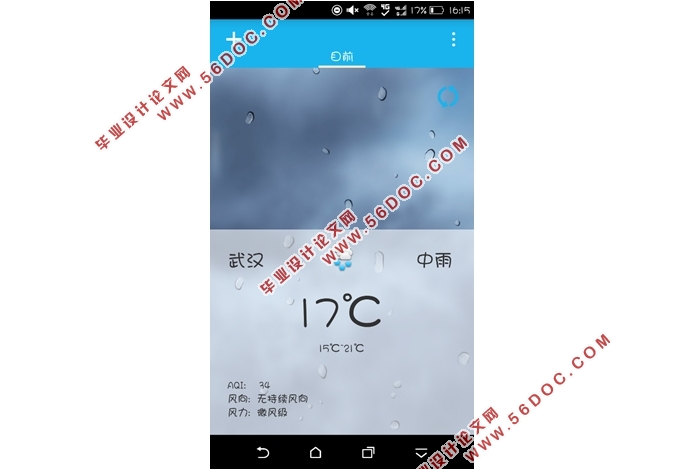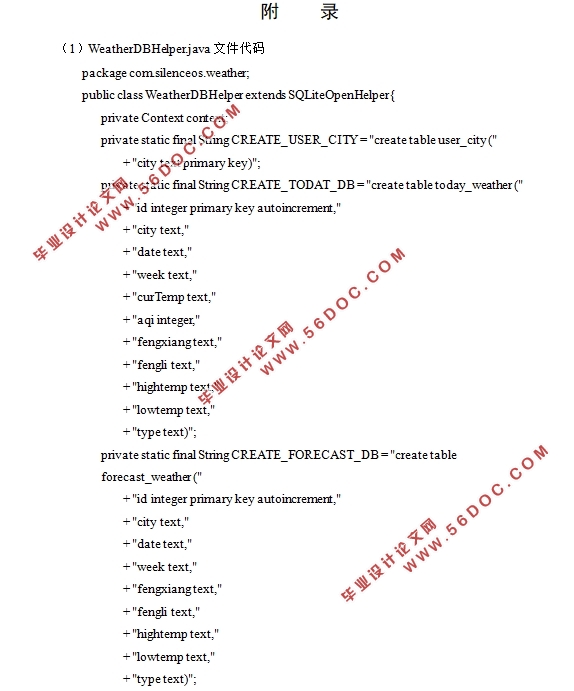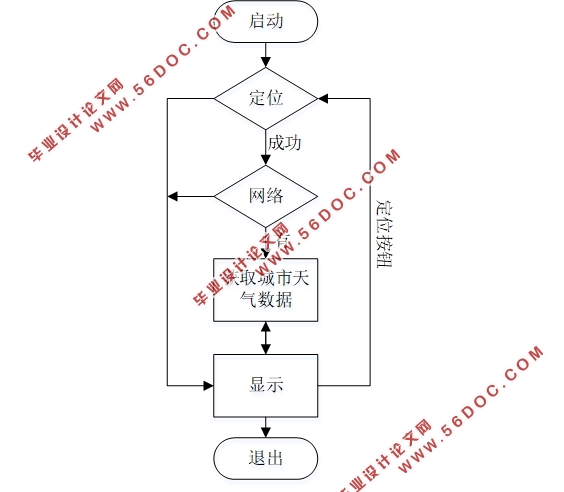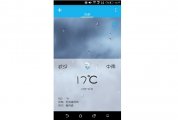基于安卓Android平台的手机天气预报APP系统的设计(任务书,开题报告,论文14000字,程序代码)
摘 要
随着Android手机的普及,人们使用手机的频率也越来越高。天气是一个从古至今人们所关注的话题,如果能够在实现手机上实时获取准确的天气数据,这对人们生活的指导意义无非是非常重大。
本文阐述了在Eclipse IDE下搭建Android开发环境,如何开发出一个能够实现自动定位、实时更新天气数据以及查询全国各个城市天气信息的系统。系统使用了HTTP GET网络通信方式,从第三方天气数据提供平台获取天气数据。接着对获取到包含天气数据信息的JSON字符串,进行解析和本地数据库存储,方便了用户在无网络情况下查看天气信息。本系统的定位方式为网络定位或GPS定位。由于系统只需要获取用户所在城市信息,不需要太过精准的位置信息,所以系统优先选择网络定位方式。本系统相比其他天气查询系统,优势在于界面简洁,体积轻巧。系统只提供了天气查询功能,没有其它附加功能和消息推送,可以满足用户查询天气的基本需求。
关键词:Android;天气;查询;HTTP GET;活动
Abstract
With the popularity of Android mobile phones, people use it more and more high frequency. Weather is a problem that has been talked about by the people in ancient times, if we can achieve real-time access to accurate weather information on the phone, which is nothing more than a very significant meaning to people's lives.
This paper describes using the Eclipse IDE to build a Android development environment, and how to developa system that can automatic position current position, real-time update of weather data and query the nationwide city weather information. The system uses the HTTP GET network communication to obtain weather data from the third party weather provider. In order to facilitate the user browsing the weather information without network, this system parse the JSON string which containing the weather data information , then storage them in local database. The system using Network Position/GPS to position the user’s current position. Because the system only needs to obtain the user's city location information, it does not need to be too precise location information, so the system first choice of network location. Compared with other weather query system, this system has advantages of simple user interface, lightweight. The system only provides the weather query function, no other additional features and message push, it can meet the basic needs of users to query the weather.
Key Words:Android; weather; query; HTTP GET; Activity
论文的章节安排
本文的章节安排如下:
第一章绪论,主要介绍了天气查询系统的设计背景、目的意义,以及国内外一些主流的天气查询软件。
第二章系统的开发技术,阐述了Android系统简介、Android四大组件,以及Eclipse开发环境。
第三章需求分析与系统设计,阐述了系统需要实现的功能和系统的设计。
第四章天气查询系统的实现与测试,详细介绍了天气查询系统的各功能模块实现过程和系统测试。
第五章总结与展望,概括了本系统实现的功能、实现过程中用到的关键技术,以及本系统在哪些方面可以改进和优化。




目录
摘要 I
Abstract II
第1章绪论 1
1.1 系统设计背景 1
1.2 系统设计目的和意义 1
1.3 国内外现状分析 2
1.4 论文结构 2
第2章系统的开发技术 3
2.1 Android系统简介 3
2.2 Android四大组件 4
2.3 Eclipse简介 7
第3章需求分析与系统设计 8
3.1 功能需求及可行性分析 8
3.1.1 功能需求 8
3.1.2 可行性分析 8
3.2 系统运行流程设计 9
3.3 功能设计 10
3.3.1 定位 10
3.3.2 城市天气查询 10
3.3.3 天气信息显示 10
3.3.4 用户城市列表 10
3.3.5 数据恢复和更新 11
3.4 数据库设计 11
第4章天气查询系统的实现与测试 13
4.1 数据库的实现 13
4.2 天气数据的获取解析和存储 14
4.2.1 天气数据获取 14
4.2.2 天气数据的解析 15
4.2.3 天气数据的存储 17
4.3 系统功能的实现 17
4.2.1 定位功能的实现 17
4.3.2 城市天气查询的实现 19
4.3.3 天气信息显示的实现 20
4.2.4 用户城市列表 23
4.2.5 数据恢复和更新 24
4.4 系统测试 26
4.4.1 测试环境 26
4.4.2 测试过程与结论 26
第5章总结与展望 28
5.1 总结 28
5.2 展望 28
参考文献 30
附录 31
致谢 40
|









